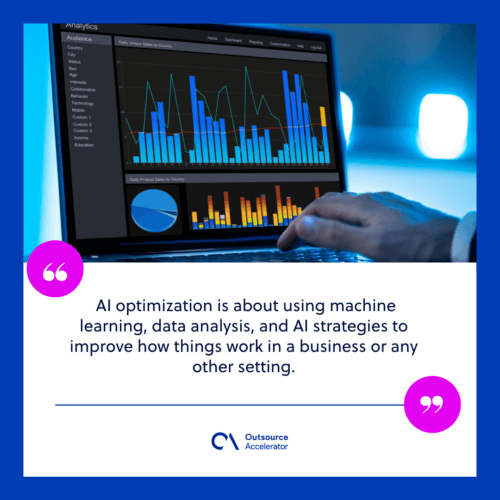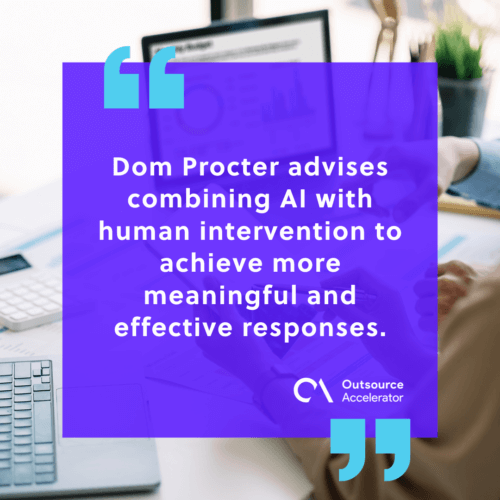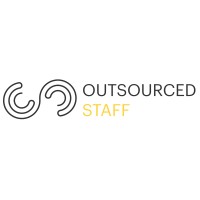Understanding AI optimization

The integration of AI has become a cornerstone for businesses striving to thrive in competitive markets.
But what exactly is AI optimization, and why is it crucial for your business’s success?
What is AI optimization?
AI optimization, or artificial intelligence optimization, refers to using AI algorithms and technologies to improve systems and processes.
It’s about using machine learning, data analysis, and AI strategies to improve how things work in a business or any other setting.
The goal is to make operations smoother, get better results, and help a business grow.

5 Benefits of AI optimization
AI optimization offers numerous benefits across various industries and applications. Some key advantages include:
Enhanced accuracy and precision
One of the primary advantages of AI optimization is its ability to enhance accuracy and precision in various business functions.
AI systems minimize errors by analyzing vast datasets and learning from patterns, leading to more reliable outcomes.
Personalization and customer satisfaction
AI optimization empowers businesses to personalize customer experiences by understanding individual preferences and behaviors.
This tailored approach fosters stronger customer connections, increasing satisfaction and loyalty.
Innovation and development
Implementing AI optimization fuels innovation by enabling businesses to uncover insights, discover new opportunities, and develop groundbreaking solutions.
It acts as a catalyst for pushing boundaries and exploring uncharted territories.
Cost reduction
Through automation and efficient resource allocation, AI optimization helps in significant cost reduction.
Businesses can operate more economically and sustainably by streamlining processes and minimizing waste.
Improved efficiency
AI-driven optimization enhances efficiency across operations, from production to customer service.
Tasks that once demanded substantial time and resources can now be accomplished swiftly and accurately.
BPO AI optimization strategies
In the 471st episode of the Outsource Accelerator Podcast, Dom Procter, the CEO of Outsourced Staff, discussed his company’s AI optimization strategies.
Here are some strategies BPO companies might use:
Outsourcing and automation
Dom shared the ways on how his company improves business processes using outsourcing and automation.
“Whenever I talk with a new client or an existing client, what we do is we look at [and tell them] we’ve got a cost-effective resource in the Philippines, but can we still automate that process?”
Can we use a tool that can transfer the data versus a human transferring that data? Can we use AI now?”
One key example Dom provides is using AI-powered support systems like Zendesk.
“Zendesk or whatever it is that you’re using reply. It’s already drafted that response for you. The key here is that someone’s reading that before it’s going out. So that’s where we look at AI optimization,” he explained.
Proper training and collaboration
The Outsourced Staff CEO also discussed the importance of proper training and collaboration between human copywriters and AI, emphasizing the need for a structured approach.
“For example, we’ve got another niche business called AIO writers. And what we do there is train SEO copywriters.
They’ve been writing for SEO for the last five to ten years, and then we teach them how to use AI properly. Exactly what you said [Derek], you put rubbish in, you get rubbish out,” Dom said.
The CEO shared his observations about the potential pitfalls of relying solely on untrained writers for AI-generated content.
“If you have a structure and can feed and chain prompt AI and give it what it needs to produce good content, then you’ll get so much.
Once you’ve got those results, the human element comes in. So I have seen a lot of people taking untrained writers, throwing them at GPT, and saying, write this content.
It’s good, but I can tell GPT wrote it versus a trained copywriter.”
Dom imagines a time when AI could work independently, but he warns against counting only on AI for answers because different AI systems have quirks and styles.
He advocated combining AI with human intervention to achieve more meaningful and effective responses.
Further, Dom suggested training virtual assistants to become AI assistants.
“[Having] a virtual assistant to become an AI assistant is much more beneficial than just letting AI do everything.
Get your VA, and we’ll train them. We’ll make sure that they know how to use it. It could be GPT, it could be mid-journey, it could be Jasper, it could be relevant, it could be one of the many tools out there, but you’ve still got to know how to drive that tool properly to get good results.”

Future trends in AI optimization
AI optimization’s future holds exciting trends poised to shape various industries. Some of these trends include:
Explainable AI
The future of AI optimization hinges on explainable AI. It focuses on making AI models more transparent and understandable.
It ensures trust and comprehension, crucial in sensitive applications like healthcare and finance.
AI for Sustainability
AI optimization’s future lies in its potential to address sustainability challenges. It utilizes data and algorithms to optimize resource usage and reduce environmental impact.
Edge AI and IoT Integration
Combining Edge AI and the Internet of Things (IoT) will amplify real-time data processing capabilities. It enables quicker decision-making and enhanced user experiences.







 Independent
Independent




